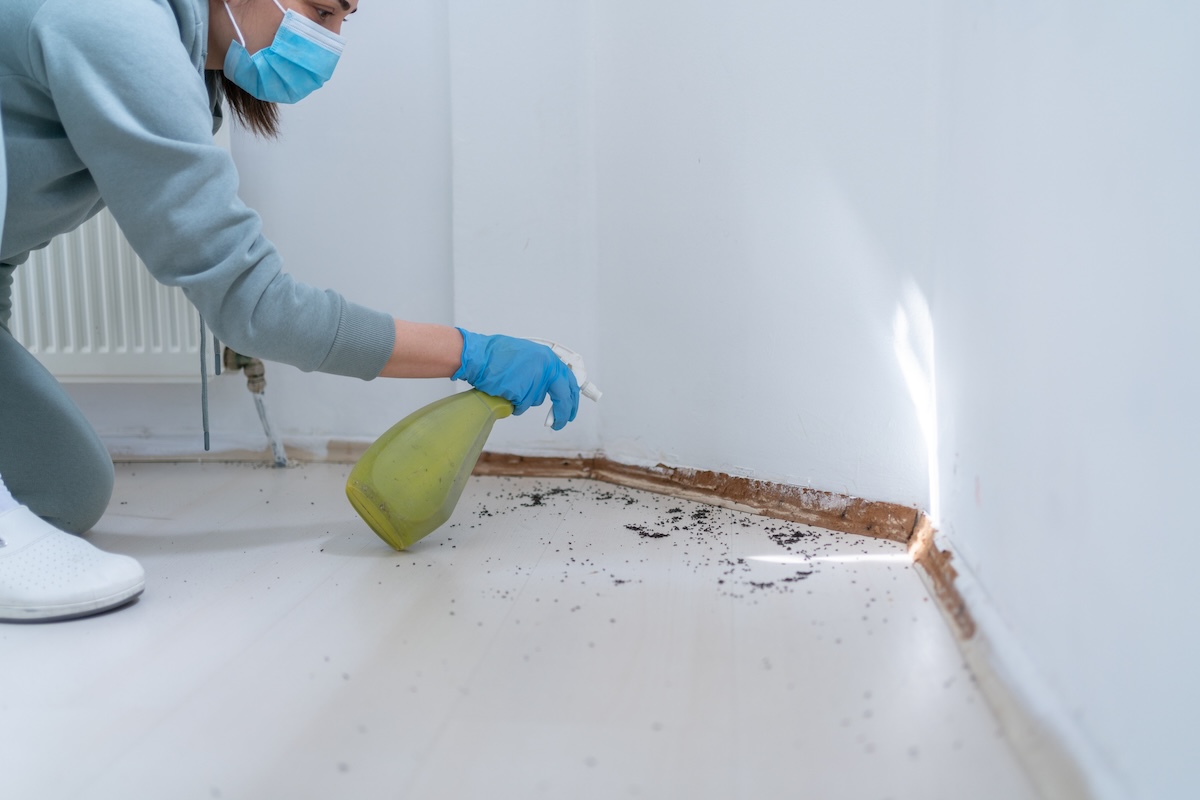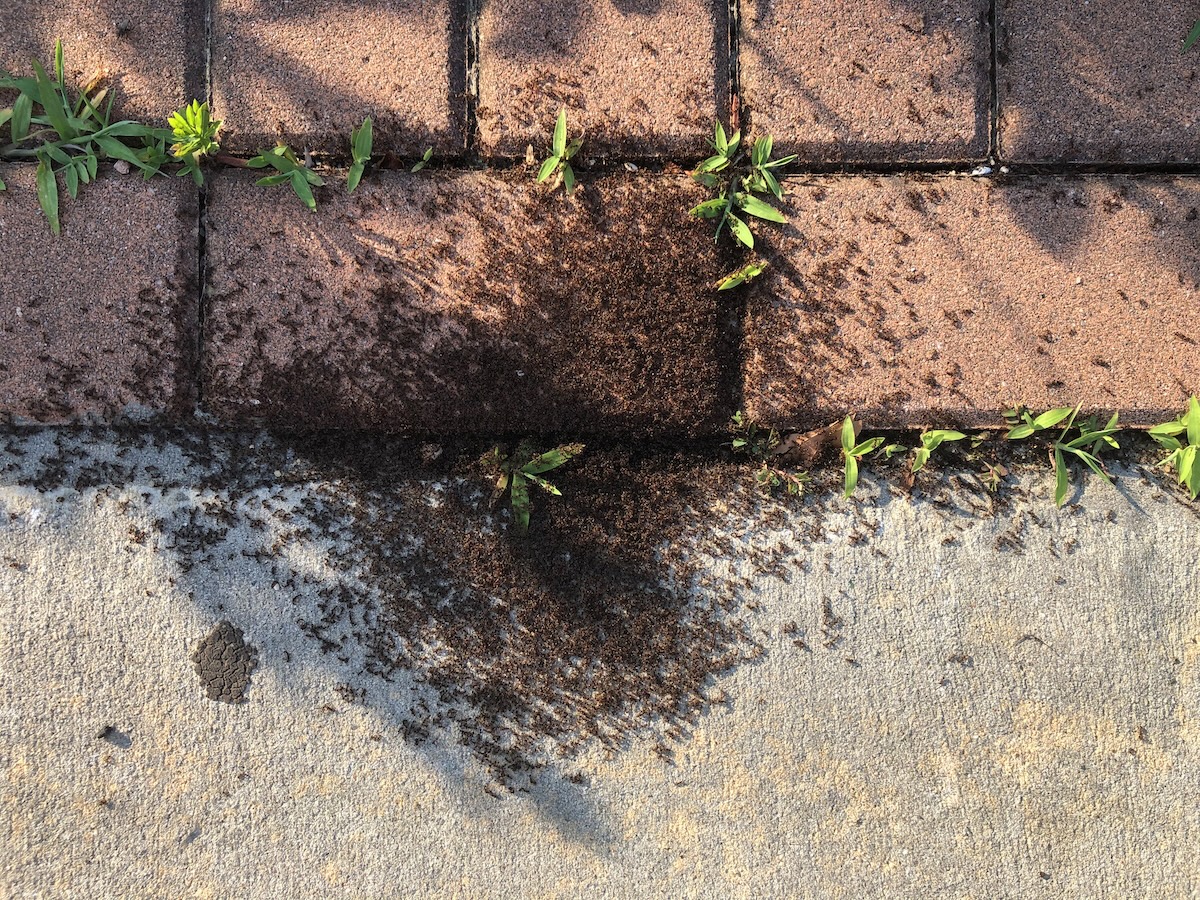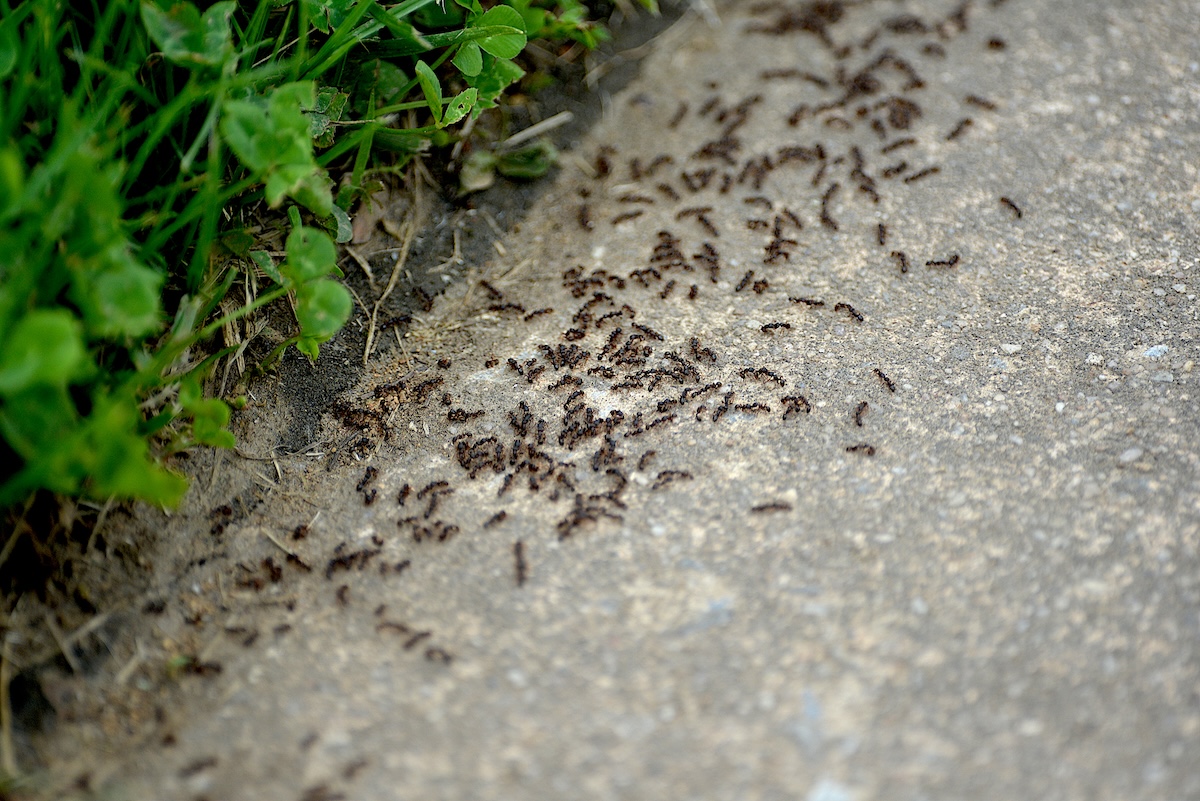

We may earn revenue from the products available on this page and participate in affiliate programs. Learn More ›
No one wants to find big or small ants in the house. Spotting even one or two can often signal that you’re dealing with a much larger ant infestation. Beyond simply being an annoying infestation, it can actually indicate bigger problems, including the potential to spread diseases and the threat of structural issues. Ahead, we’ll share some insights from pest control professionals and our top tips to help you learn how to get rid of ants at your home.
Safety Precautions
There are a few important things to keep in mind before you start trying to kill ants in the kitchen, bathroom, or other rooms. “If you’re using any chemical products (sprays, baits, granules), always read the label first,” cautions Kris Bagnara, the director of service for All U Need Pest Control in Fort Myers, Florida. He also stresses the importance of keeping chemical products away from food preparation surfaces, pets, and children.
Nontoxic Remedies for Ridding Ants

Fortunately, not all methods of ant removal require the use of potentially dangerous chemicals. There are several nontoxic remedies for getting rid of these pests. They include:
- Spray vinegar and water along scent trails.
- Target ants with a mixture of dish soap and water.
- Apply diatomaceous earth.
- Pour boiling water directly over outdoor ant mounds.
Bait Traps
Bait traps come in various forms, including liquids, powders, and gels, and may be intended for indoor or outdoor use. However, they are all designed with the same goal: to lure the worker ants into sharing the insecticide-treated bait with the other ants in the colony (and, ideally, the queen). Bagnara explains, “Over time, this wipes out the colony. That’s why it’s important not to kill the ants you see right away—you want them to bring the bait back first.”
Our Recommendation: Terro Ant Kill Bait Stations at Amazon for $11.97
With 12 liquid bait stations included, you can increase the odds that the insecticide will reach more members of the colony—or multiple colonies around your property. These indoor bait stations are designed to work quickly to decrease activity within a few days.
How to Get Rid of Ants Inside the House

Getting rid of ants in the house will require some time and patience. Most solutions will not deliver an immediate solution to your problem—while they may wipe out several ants, others will likely remain. However, with persistence and by combining one or more approaches, you can find success and eliminate your ant problem.
Step 1: Use bait traps.
Bait traps are an indoor ant killer that are easy to use. Placing the traps in the right spots can help ensure success. Place them in areas where you’ve noticed ant activity, such as along the baseboards of the kitchen or near bathroom window sills. If you’ve been able to identify the ants’ entry point into your home, place them there to increase the chances that more workers will bring the bait back to the colony.
Step 2: Spray vinegar and water to disrupt scent trails.
Spraying a mixture of vinegar and water around the house is one effective home remedy to get rid of ants. Beyond simply not liking its strong odor, Bagnara explains that vinegar “disrupts the ants’ scent trails, so they get confused and stop coming in.” He recommends making this natural ant repellent by combining vinegar and water in a 1:1 ratio before spraying it along entry points and along any ant trails in your home.
Step 3: Target ants you see with a mix of soap and water.
Using only two ingredients that are in your kitchen right now, you can make a homemade ant killer to target pesky ants in the bathroom, laundry room, or other rooms in the house. “A simple soapy water spray will kill ants on contact and wash away their scent trails,” says Bagnara. He continues, “It’s not a long-term solution but can help knock down visible ants while waiting for baits to work.”
Step 4: Dehydrate ants and kill them with diatomaceous earth.
You might want to give diatomaceous earth a try if you’re looking for anything from the best fire ant killer to the best carpenter ant killer. If you’re not familiar with diatomaceous earth, it is a fine powder that is made up of tiny fossils of diatoms, which are microscopic organisms that have very sharp edges.
To use this nontoxic ant killer, sprinkle the powder along ant trails or other areas that the ants frequent. When they walk through it, the abrasive fossils puncture their exoskeletons, causing them to become dehydrated from a loss of moisture. Eventually, this dehydration will kill them.
How to Get Rid of Ants Outside the House

There are various approaches you can use to get rid of ants outside your home. The best approach for you may depend on the severity of the infestation, the types of ants that you’re seeing, and the preference to use natural and organic methods of pest control over chemical treatments. If you’re applying any chemical treatments, don’t forget to read the label to avoid accidental improper use.
Step 1: Use ant bait traps to target the entire colony.
The process for using ant bait traps outdoors is similar to using them indoors. However, there are a few additional considerations you’ll need to keep in mind. “Place outdoor bait stations near entry points where ants are coming in or near ant trails you see around the foundation, patios, or walkways. Keep them out of direct sunlight if possible (heat can spoil the bait) and make sure rain won’t wash them out,” says Bagnara.
In addition to being mindful of rain, also consider the outdoor temperature. If it is too hot (over about 90 degrees Fahrenheit), then you might find that you can attract more ants by placing the traps out in the evening. Also, be sure to avoid leaving other food sources around, including pet bowls and open trash cans. The bait traps will be most effective when they’re the only available source of food as more ants will bring them to the colony.
Step 2: Try an ant spray for immediate results.
Many ant exterminator sprays are designed to deliver very fast results. They can be sprayed directly on ants or applied to ant trails to target other ants that will pass through. However, if you are planning to use an ant spray outdoors, keep in mind that some products may also harm other insects and wildlife in your yard.
Synthetic formulations can not only kill bees and other beneficial insects, but they also have the potential to threaten birds and fish if introduced to their food supply or water source. Choosing natural insecticides, like Wondercide Outdoor Pest Control, or ones made using less-toxic pyrethrins can help protect other wildlife in your yard.
Step 3: Apply granular ant bait to the property.
While granular ant bait works similarly to the bait found in traps, it is applied in a different manner. Bagnara explains, “Broadcast granular ant bait around the yard and near the foundation where ant activity is high.” As with the bait in traps, the goal is for the ants to bring the insecticide-treated granules back to share with the other ants in the colony.
Additionally, applying two types of bait—such as granular and a liquid form in a bait station—can be more effective. Doing so can increase your chances of success if the ants you’re targeting simply prefer one over the other. Matt Smith, the co-owner of Green Pest Management in New Castle, Delaware, also recommends combining bait with a non-repellent spray. He says, “We want the ants to walk through it and get it on them so that they can transport the product deep down to the colony for us.”
Step 4: Pour boiling water over ant hills.
If you’re looking for a home remedy to get rid of ants that doesn’t use any chemicals, consider using plain boiling water. After bringing the pot of water to a boil, Bagnara recommends pouring it directly into any ant mounds that you see outside the house. “This can kill a portion of the colony. It’s not always 100 percent effective, but can reduce surface activity and works as a natural option.”
Tips for Preventing Ant Infestations Indoors and Out

We’ve all heard the saying, “An ounce of prevention is worth a pound of cure.” This is definitely true when it comes to ants. Preventing an infestation before it becomes a problem is much easier and more effective than trying to implement some sort of pest control for ants once they’re already invading your space.
PennState Extension recommends identifying what’s attracting the ants to your home so you can eliminate the sources. Ants are attracted by sources of food or water, so it is important to clean up spills quickly and to avoid leaving food out on the countertops. You should also make sure that all of the items in your pantry are sealed in airtight containers. Water sources, including those from plumbing leaks, should also be addressed.
In addition to eliminating any potential sources that may be attracting the ants, you should also take measures to make it more difficult for them to enter your home in the first place. This will involve using caulk to seal off entry points, such as any small cracks or openings along the doors or windows.
Final Thoughts
While ants can be a huge nuisance, there are several effective ways to remove them from your property, whether they’re inside or outside your home. Depending on the severity of the infestation, you may find it most effective to combine multiple strategies together to really target the ants and wipe out the colony. Additionally, make sure that you are not solely focusing on killing the ants that are currently causing a problem. You also shouldn’t overlook the importance of taking preventative measures to make sure that new ants aren’t attracted to your home.
